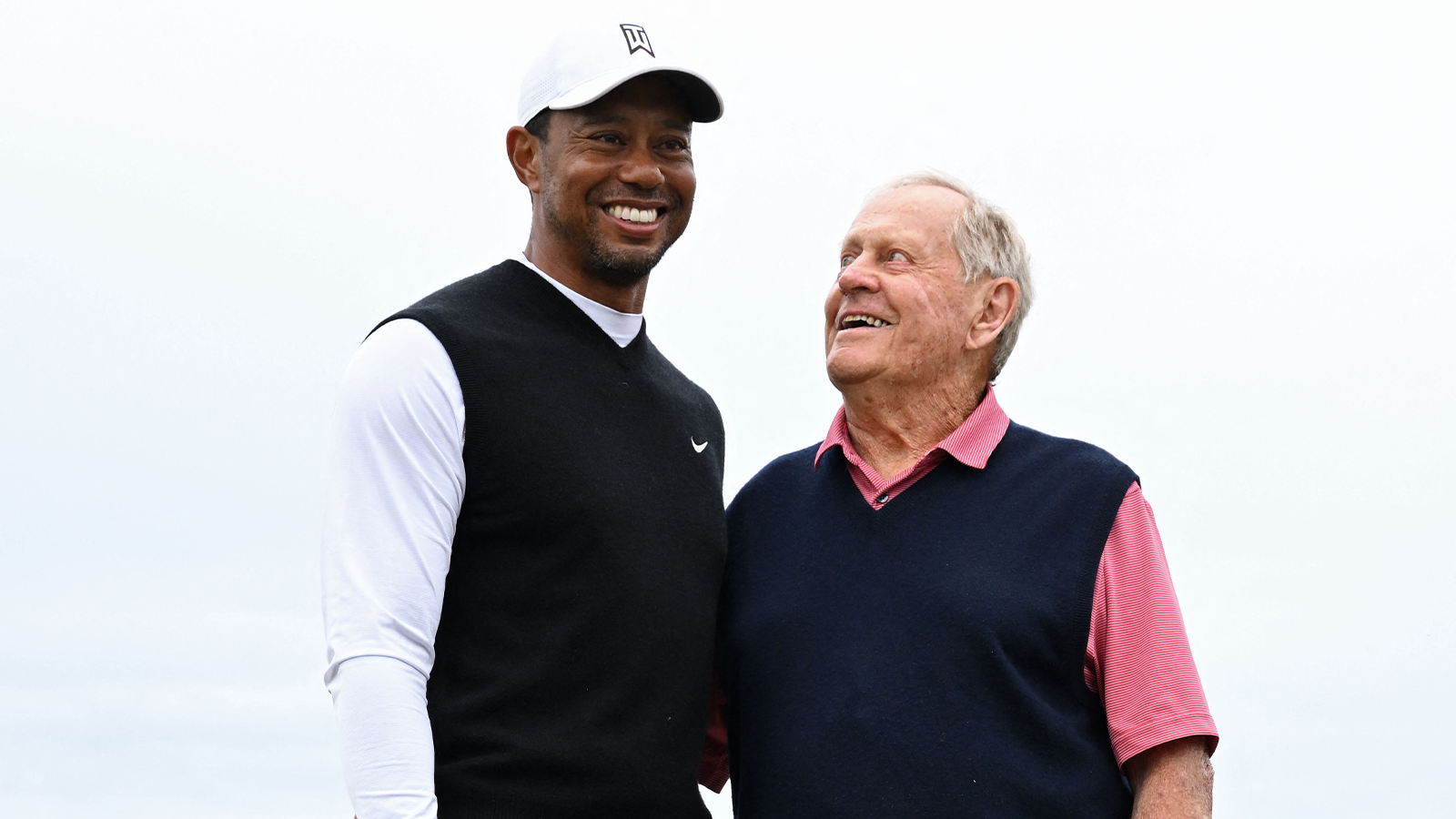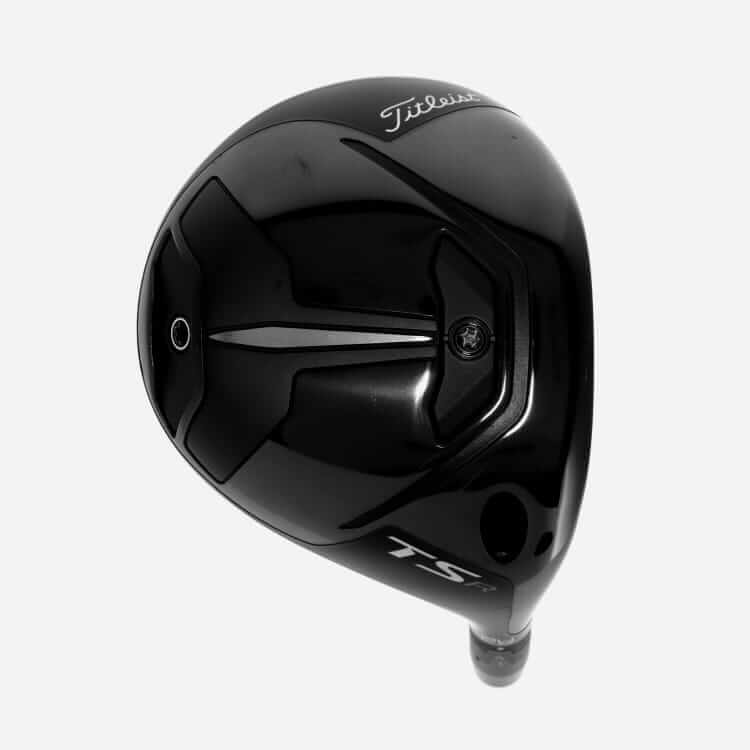Golf Instruction
All Golfers Need to Understand What the Real Scoring Shots Are
Based on data collected by Shot Scope, the average 14 handicap hits 5.04 greens-in-regulation per 18 holes.
Compared to players who are 6 strokes better, the 14 tends to hit 2.7 fewer greens.
While the 8-handicap makes his living posting lots of scores at or near 80, the 14 saunters his way through the typical round in about 86 strokes; and the difference between him and his single-digit playing-partner lies in each player’s ability to execute from inside 50-100 yards.
Once we take stock of the nearly 13 greens that the 14 misses on-average, his cumulative score on those holes amounts to roughly 14-or-15 over-par; which isn’t ideal.
Stacked against the double-digit handicapper, the average-8 still misses the majority of his greens (10.26); but the 8 finds a way to play those holes in slightly better than bogey-golf.
As Shot Scope’s findings suggest, the 8 saves-shots by leaning on his short-game; while the 14 has a habit of getting down in 3 (or more).
While being made aware of these observations is nice and all, we still have to bridge the gap between thinking about getting up-&-down and getting up-&-down. Or, we might just need to learn how to get down in 3.
Wherever you do stand on this issue, however, the fact remains that the typical mid-handicapper costs himself shots around-the-green more than he does off-the-tee, from-the-fairway, from-the-rough, and elsewhere (but still) prior to that (what’s typically a) birdie-pitch/chip.
In today’s era of the distance-obsessed, even some of the game’s top-players aren’t comfortable in executing (what should be) less than full-shots. Young-guns such as Austria’s two-time Tour-winner, Sepp Straka, have a ton of athleticism and hit their ball a country-mile; but they can be thrown for a loop when they’re asked to-take a little-off of a scoring-shot like the 6-foot 3-inch brute was on the third playoff-hole at TPC Southwind last year.
After Straka’s opponent (in the playoff), Will Zalatoris, found the penalty-area that was (located) short of the putting-surface with his tee-shot on the 157-yard, par-3 11th-hole, it became Straka’s turn to-play; and the Austrian dunked his ball into the same spot.
With 30-to-40 yards of safe golf-course situated beyond the 11th-hole’s front-right hole-location, Straka had a ton of room to-miss past the hole; and he still couldn’t do it. For a guy who hits his typical-driver 300 yards, you would think he’d be able to fly an iron between 160 and 180 yards (or more).
While Straka’s tee-shot played from-160 happens to be further than our area of concern for today’s purposes, it’s these kinds of swings that make or break rounds; for all types of players. Instead of attacking a pitching-wedge to a front-right hole-location, Straka could’ve chipped an 8-iron to the middle of the green and two-putted for the win. Learning how to control-distance; in an effort to also limit it, takes practice.
If you’re the typical 14-handicap, then you’re used to playing your third (& third/fourth-shot) on par-4’s (and par-5’s) from awkward distances. Whether you end up playing this shot from a distance of 25, 40, 55, 70, or 85 yards varies on a hole-by-hole basis, but what shouldn’t change is your mindset. You need to be aggressive.
According to Shot-Scope, the average-amateur tends to miss short-&-right of the green more than anywhere else. From that spot, there are times when we have a number of options; and others that present very few. If you have a run-up between you and the hole and/or green to work with, here’s what you need to do:
Non Forced-Carry Spots : Too often, golfers take big-swings on short-shots. Yes, while Phil and Tiger make that look-easy, it’s not; and throwing the ball a mile in the air on a near green-side shot is risky. When you have short-grass between you and the hole, why not use it to your advantage? In other words, your best-bet is learning how to bump-it.
Rather than pulling a lofted-wedge and proceeding to hit a chunk de-cell (or skulling it) , you can make this shot easier by grabbing a short-iron or PW and making a much smaller-swing. Just because you have 40 yards between your ball and the flag doesn’t mean you need to fly it 30 or 35. Sometimes, flying it half or less than half of the way-there is your best option.
Like you would on your typical, green-side chip-shot with your 60-degree wedge, your ball-position should be back of center and most of your weight needs to be on your lead-foot when you’re trying to hit the PW/9-iron bump-&-run. From there, we’re making a normal, chipping motion; meaning we’re giving the grass a haircut and not-allowing our hands to climb past waist-high.
On a short bump-&-run, shortening-distance can be achieved by choking-up or adjusting your club-selection. By dropping from an 8-or-9 iron to a 9-or-PW, the ball won’t travel as far and you don’t have to change your (bump-&-run) swing/motion.
Just remember, using a club with more-loft (i.e. dropping from an 8 to a 9) on your bump-&-runs is going to increase the distance of your carry and decrease the distance of your roll-out. If you prefer to limit-distance on your bump-&-runs by choking-up as opposed to changing club-selection; just be advised that doing so makes it easier to make solid-contact.
While choking-up allows you to make better contact, it also makes it harder to predict the distance that your ball carries and the distance that your ball rolls-out. Knowing what works for you and when comes down to practice; and you need to practice from different distances, lies, and (in different) situations.
Bump-&-Run Checklist :
- Weight Forward
- Ball-Position Nearer to Trail-Foot
- Waist-to-Waist Swing
- If you’re new to this shot, gauging how far the ball is going to go/run-out can be harder than the physical execution of the shot. In other words, perfect/center-face contact may not equate to a favorable result in the beginning. But, once we’ve done the hard-part (of making good-contact); which is actually the easy-part of this specific-shot, the rest will come quickly. You just need to practice it!
- Fool around with club-selection and choking-up : Choking-up is an under-utilized weapon on chips-&-bumps (and pitches, too). Why change your swing/set-up when you can just alter the position of your hands on the (same-) club’s grip?
Forced-Carry
I hate to break it to you (the average-14 handicap), but you don’t have enough game to play flop-shots left-&-right.
With that in-mind, learning how to find enough-loft to-carry the bunker (or rough/water) between you and the hole; but not too much that you’re risking leaving-it short, needs to be your mindset.
Whether you’re playing your next short-sided pitch-shot from the fairway or the rough, you need to keep the club-head moving. As Billy Horschel points out, the average-golfer is “afraid of the ground” when they’re pitching/chipping.
In other words, the average-golfer has a tendency to lose their acceleration/speed at the bottom of their swing impact on their feel-shots; and that’s precisely what can’t happen. When golfers are “afraid of the ground”, they’ll either hit their pitches/chips thin or fat; and not-solid. Near-the-green, here’s what we can do to fly that bunker safely and without missing-long/short:
On a full-wedge, our feet should be about shoulder-width apart. On a bunker-shot, our feet are wider than that. On a bump-&-run or standard chip-shot, our feet should be narrow; nearly touching.
For the standard-pitch (over-trouble), a narrow, but not too narrow, stance is ideal. Your feet should be noticeably wider than they are on a chip, but not nearly as wide as they are on a full-wedge.
Once we have our feet inside shoulder-width apart, we need to add a touch of loft to our 56-degree (not lob) wedge and make sure that we’re setup-square to the intended-target. Then, we can place most of our weight on our lead-foot.
Now, go-ahead and allow your arms to swing-freely while limiting the movement of your stable lower-body and without over-fixating on the length of your swing. All-the-time, players get wrapped up in the wrong-details; and on-pitches they want to know what their proper swing-length should be. But, what works for you, in terms of the length of your pitching-swing, may be cancerous to another player’s ability to play a good-pitch. At some level, it’s okay to-allow your hands to climb to shoulder-high or past-that on a pitch-shot. Similarly, you can utilize a short-swing that allows your hands to travel a bit-past waist-high. As long as you’re able to maintain a stable-base/lower-body, the length of your swing can take-on many forms.
Also, you don’t need to utilize an open-face to hit the ball-high and soft. If your contact is good, you’re going to get the spin you want. In order to make consistent-contact, soften your arms and feel the pace of your swing pick-up on the down-swing. Around-the-greens, tension is death. If you’re anything but relaxed over-the-ball, your feel or your contact will be compromised; or both.
If you’re chunking a lot of pitches, check your alignment and make sure you’re not too open to the target. The more open you are, the more inclined you’ll be to get too steep and/or deliver the club-head from out-to-in. Also, check your ball-position. If you’ve placed the ball too far back in your stance (towards your trail foot) , you’ve increased your chances of catching-it heavy. Your thin and (even) fat shots could also be the result of your ball-position being too far up. On these pitches, your ball-position should be in the middle of your stance (/feet).
Think about it this way: If your weight is where it should be (on your lead foot) , you’ve already done the work that’s required to-contact the ball with a descending-blow. Given that, positioning your ball too far back enhances the odds (even more) that you’ll end up with a steep-delivery; to the point where hitting the ball heavy is more likely than it should be.
Like you can (do) on your bump-&-runs, choking-up on your standard pitch-shots has its advantages. Just be advised that choking-up doesn’t allow you to fly the ball as high/far as you would normally.
Forced-Carry Checklist :
- Stance is narrow but not too narrow
- Weight (Still) Forward But Not As Forward As A Chip/Bump
- Ball-position should be middle
- Soft Arms-&-Hands: Your grip-pressure should be similar to your light grip-pressure on your putts.
- (With a relaxed set-up and swing) You don’t need to worry about the length of your swing.
- Just because you need to fly a bunker and stop the ball somewhat quickly doesn’t mean you need your most-lofted wedge
- Stable/quiet knees and lower-body
- You’re Allowed To Choke-Up
You may be asking yourself, “how is this relevant to Straka’s tee-shot on the par-3?”
It’s relevant because his was a type of feel-shot that also requires a certain carry-distance. In other words, you can’t use the ground to your advantage (like you would on a chip/bump-&-run) and a full-swing isn’t optimal. Also, a touch-shot (or feel-shot) often means that we’re maintaining the same (full) swing-length (or close to it); but we’re decreasing the amount of speed that we use.
Decreasing club-head speed can be accomplished in a number of ways; whether it’s by shortening your swing, narrowing your stance, quieting the movement of your lower-body, choking-up on the club’s grip, or changing club-selection (among other ways).
If you’re the typical mid-handicapper, you need to give yourself better looks (/shorter putts) for par. For that to happen, you need to pitch-it and chip-it closer to the hole; which isn’t possible without a reliable , bump-&-run type-shot and a pitch/half-wedge type shot. As for the latter, don’t get carried away with knowing what the length of your swing is. Instead, try using the same pitching-motion we discussed earlier and, then, controlling your distance by tweaking your club-selection and tweaking how much you decide to choke up on your (sand/lob/gap) wedge’s grip. In other words, executing a 30-yard pitch shouldn’t be different from a 50 yard pitch; except for club-selection and/or how much you decide to choke-up (or not choke-up).
If these scoring-shots (pitch-&-chip shots) are the weakest part of your game, then you need to hone in on center-face contact. In other words, being a good pitcher/chipper requires solid-contact. Expressed differently, people who can’t pitch-&-chip (also) can’t find the center of the club-face (either) enough, at all, or with any amount/level of consistency.
Making crisp, center-face contact is the key to success on all kinds of pitches-&-chips. For that to happen, you can utilize a number of unique techniques/tendencies. But, hitting the center of the face on these closer-to-the-green shots is directly dependent on….
- Placing Most of Your Weight On Your Lead/Front-Foot
- Maintaining Quiet Knees During The Motion Itself
- Relaxing Your Hands-&-Arms
- Staying Level by Maintaining Your Posture And (Your) Steady Head-Position
- Having A Clear Picture of How You’re Going To Execute The Shot (bumping-it, pitching-it, proper ball-position, proper club-selection, choking-up or not, etc.)
Once you’ve found an approach that works for you (on the bump and the pitch), trust it, and don’t let doubt creep-in on the course. While I know that’s easier said than done, you can protect against bad-thoughts (from creeping-in) by making confident practice-swings.
On the greens, taking practice-strokes while (also) looking at the hole, rather than the ball/ground, makes it so much easier to control distance/pace. When you’re inside 50 yards, don’t be afraid to do the same on your pitches and chips. Along with a couple of practice-swings (as you’re) looking at the hole, mix in a couple or a few practice-swings where you’re focusing on a specific-point on the ground; making sure the bounce/sole of your club-head strikes that spot.
If you KNOW you’re going to make solid/center-face contact, you’re going to hit a good pitch/chip and you’re going to be a good pitcher/chipper. While the best-players have different ways of hitting their pitches, chips, and (all) feel-shots; all of them are trying to hit the center of the club-face….
Every. Single. Time.
Cover Image via X
-

 LIV Golf Tour1 week ago
LIV Golf Tour1 week agoViktor Hovland Makes His Decision on PGA TOUR Future
-

 Fantasy Golf Predictions4 days ago
Fantasy Golf Predictions4 days agoFantasy Golf Picks, Odds, and Predictions – 2024 Wells Fargo Championship
-

 Interviews1 week ago
Interviews1 week agoGary Player Says Tiger Woods Won’t Go Down as The Greatest Athlete Ever Because of This Mistake
-

 News1 week ago
News1 week agoJack Nicklaus Makes CRAZY Tiger Woods Prediction
-
LIV Golf Tour1 week ago
LIV Golf to Hold Individual Championship at Public Chicago Golf Course
-

 News1 week ago
News1 week agoPhil Mickelson Hints His Golf Career May Be Coming to a Close
-

 LIV Golf Tour5 days ago
LIV Golf Tour5 days agoTalor Gooch, David Puig Land PGA Championship Invitations
-

 News2 days ago
News2 days agoLIV Golf Has Tiger Woods and Rory McIlroy’s Relationship on Thin Ice









